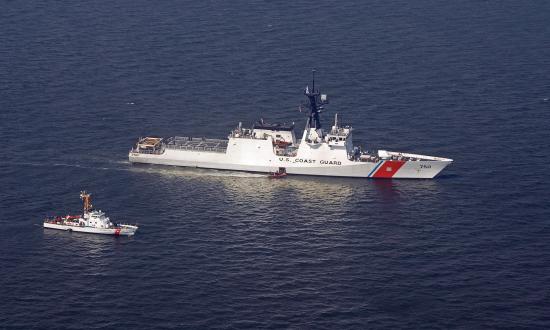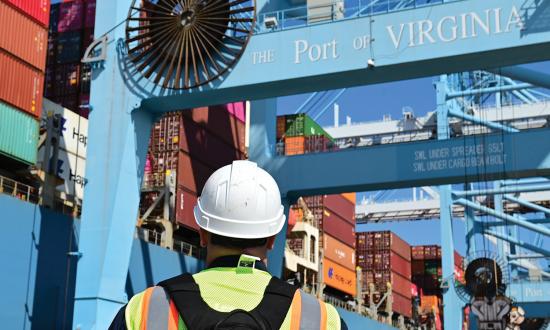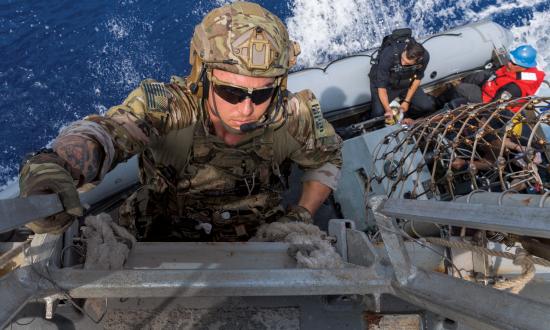The Coast Guard faces a gap between its strategic goals in the western Pacific and what capability it can reasonably provide. Much has been written recently about the Coast Guard’s increased regional presence, and while there have been several deployments in support of Indo-Pacific Command (IndoPaCom) in the past few years, the service is missing an opportunity to demonstrate its unique value in this space. To rectify this, the service must commit to a 1.5 national security cutter (NSC) presence in the western Pacific, to be achieved through the acquisition of a 12th and 13th NSC, operations and maintenance funds from IndoPaCom, and forward basing with and operational control by the Navy’s Seventh Fleet.
The Coast Guard, in step with its sister services, has elevated great power competition with China to a major strategic focus. Countering Chinese hegemony and aggression, particularly in the East and South China Seas, is essential to ensuring a free and open Indo-Pacific. The Coast Guard has acknowledged its desire to increase operations in this arena, as noted in its Illegal, Unreported, and Unregulated Fishing Strategic Outlook and the triservice maritime strategy Advantage at Sea. Its unique law enforcement authorities and reputation as a partnering agency make it a critical component of national security across the competition continuum. The service is well suited to provide increased presence in the region without a simultaneous escalation or risk of armed conflict.
With this in mind, if the service is looking to demonstrate it is ready, relevant, and responsive to the current geopolitical landscape, it should commit to a 1.5 NSC western Pacific presence. This coverage would allow the service to double down on freedom of navigation operations, IUU enforcement, and partner-nation capacity building, as well as provide a quick-response capability to IndoPaCom in a crisis or contingency operation. However, doing so should not cannibalize other highly valuable and visible missions, namely, counterdrug support to Southern Command.
To accomplish this increased presence, the Coast Guard must seek full funding for NSC 12, request acquisition of a 13th NSC, and provide .5 NSC coverage from the current inventory. The service should take advantage of Congress’s enthusiasm for funding this class of cutters well beyond the original program of record and work both up and across the administration to tie these additional cutters directly to the National Security Strategy. Realizing the historic lag between new acquisitions and increases in operations and maintenance funds, the Coast Guard also should seek budgetary assistance from IndoPaCom’s Pacific Deterrence Initiative.
To fully synchronize the two new cutters strategically and operationally with the IndoPaCom mission, NSCs 12 and 13 should be forward based with the Seventh Fleet in Japan, which also would hold their operational control. This Patrol Forces Southwest Asia–like arrangement would ensure Coast Guard capabilities are maximized and fully integrated with the joint force, as well as solidify the argument for funding assistance from the Department of Defense.
If the Coast Guard wants to realize its full value in the competition with China, it must commit to an increased presence in the western Pacific. Two new cutters dedicated to Seventh Fleet operations, with rotating coverage from other assets, would fill a gap within the competition continuum that other forces cannot or should not fill. Working with congressional partners and the administration on funding will ensure the Coast Guard can overcome this challenge.






